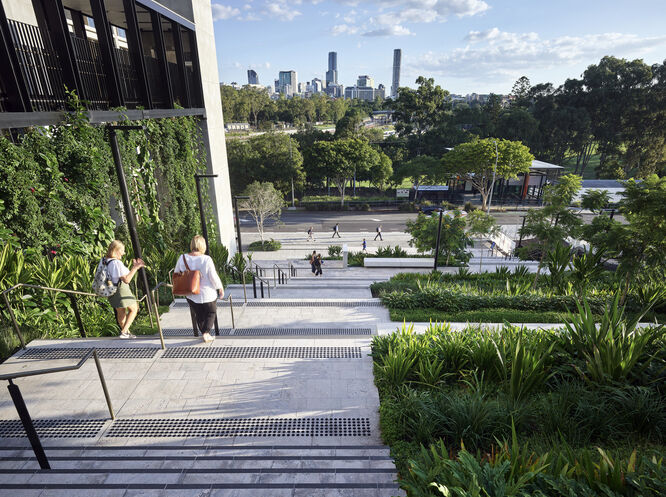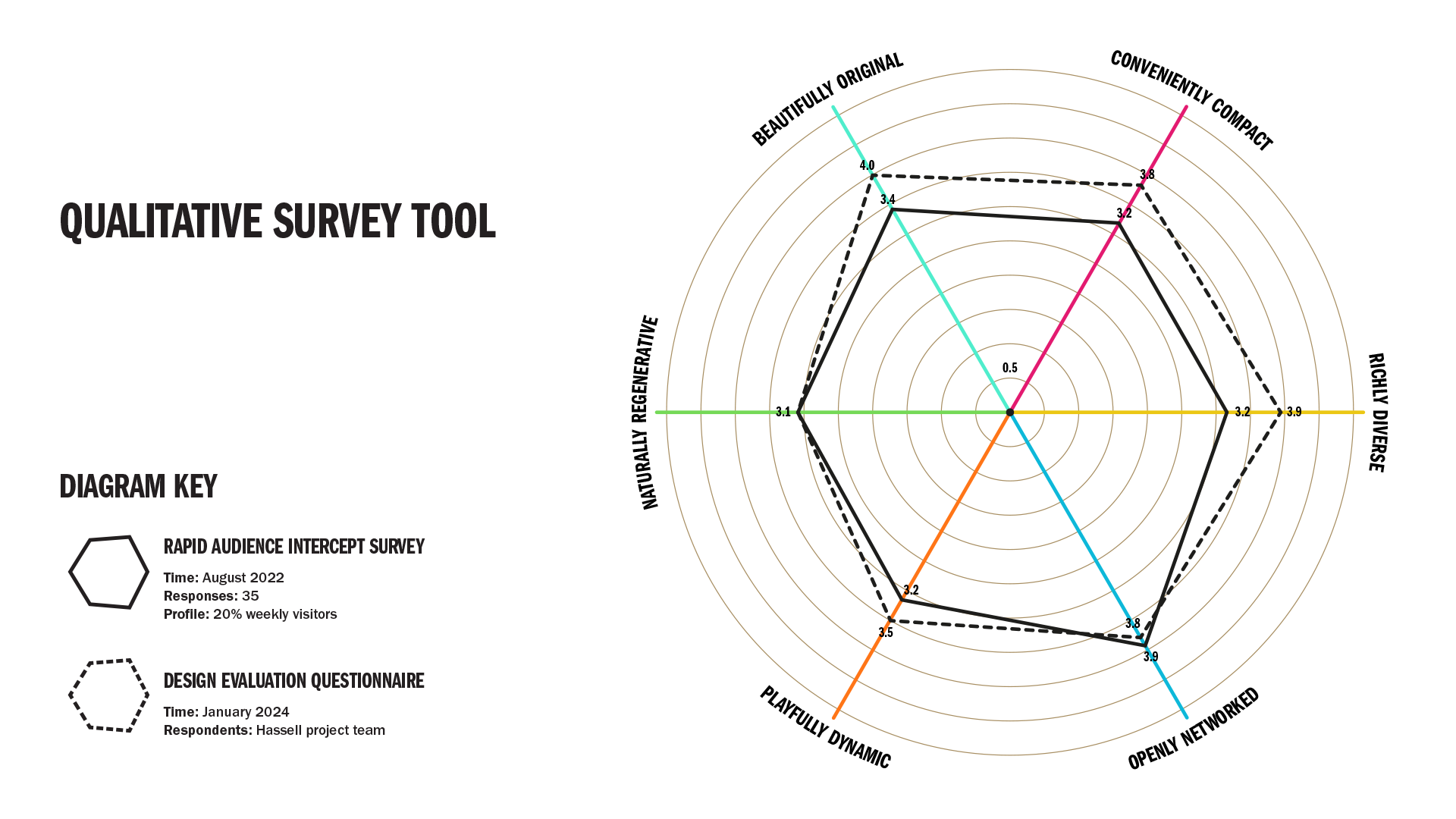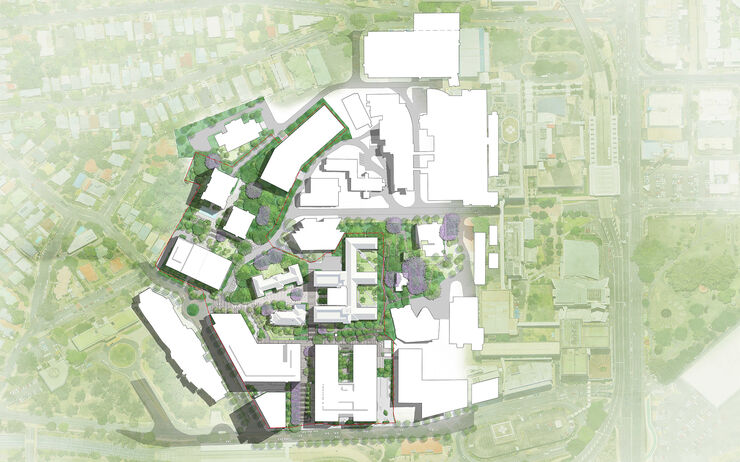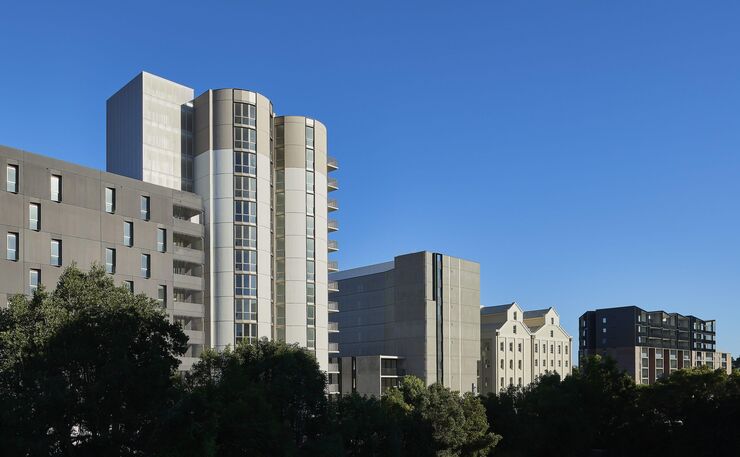Six Qualities 2.0: a blueprint for shaping great places

We’ve put our Six Qualities of Great Urban Places design framework into practice by analysing four award-winning projects. Download the report
In 2022, we introduced Six Qualities of Great Urban Places, a framework for designing ecologically sustainable, economically vibrant, and socially responsible destinations in cities and neighbourhoods — places people love. It revealed that within the sublime complexity that makes urban places remarkable, six essential qualities emerged — Beautifully Original, Conveniently Compact, Richly Diverse, Openly Networked, Playfully Dynamic and Naturally Regenerative.
Now in 2024 we’re sharing Six Qualities 2.0, to test the framework’s robustness against four award-winning projects from our Australian portfolio. Darling Harbour, Herston Quarter, Flour Mill of Summer Hill, and Riverside Green are evolving into cherished destinations within their respective communities. Although varying in scale, scope, and character, a consistent thread has been identified through this analysis — the presence of attributes defined by the Six Qualities framework across all contexts.
“Through the examination of four distinct yet equally acclaimed projects, we illustrate how the Six Qualities can surface in diverse contexts. The analysis further demonstrates the versatility of the framework as a research and evaluation tool.”
— Camilla Siggaard-Andersen, Practice Leader - Landscape Architecture, London and author of Six Qualities of Great Urban Places 2.0


DARLING HARBOUR, SYDNEY
The Darling Harbour transformation is perhaps most successful in creating an ‘openly networked’ destination. This quality is particularly pronounced as the site was once severely disconnected and inaccessible. With its mix of large-scale venues and everyday amenities, Darling Harbour also illustrates the importance of combining ‘convenient compactness’ and ‘rich diversity’ across multiple scales. Additionally, the site relies on a curated programme of activities to bring life to the public realm.
HERSTON QUARTER, BRISBANE
The Herston Quarter master plan aims to create ‘convenient compactness’ by co-locating complementary functions. Through the completion of Stages One and Two, the site has also become more ‘openly networked’, which has created a positive ripple effect within the local community. By incorporating elements of the local context and considering health from a holistic perspective, the master plan is on track to deliver a precinct that further embodies the essence of being ‘beautifully original’ and ‘naturally regenerative’.


FLOUR MILL OF SUMMER HILL, SYDNEY
With a staggering 98% of apartments sold prior to completion, Flour Mill of Summer Hill stands as a powerful example of adaptive reuse and community integration, fostering a destination that is both ‘beautifully original’ and ‘openly networked’. The development also underscores the importance of embracing a ‘playfully dynamic’ strategy in curating community and commercial spaces within rapidly transforming neighbourhoods.
RIVERSIDE GREEN, BRISBANE
By prioritising social value over commercial return, Riverside Green has not only become a popular destination, but also a symbol of Brisbane’s multifaceted resilience. With a permeable network of diverse open spaces, the site can adapt to various settings and caters to different needs. It is this adaptability, coupled with the design’s capacity to foster social and environmental connections, that reveals its ‘naturally regenerative’ quality.

This study underscores the adaptability and relevance of the Six Qualities framework in diverse urban development situations. It also highlights the framework’s potential as a versatile tool for research, consultation, and evaluation, paving the way for more informed and effective urban planning and design strategies. As we continue to apply and refine the Six Qualities framework, we look forward to uncovering further insights that can contribute to creating vibrant, sustainable, and inclusive urban spaces.






